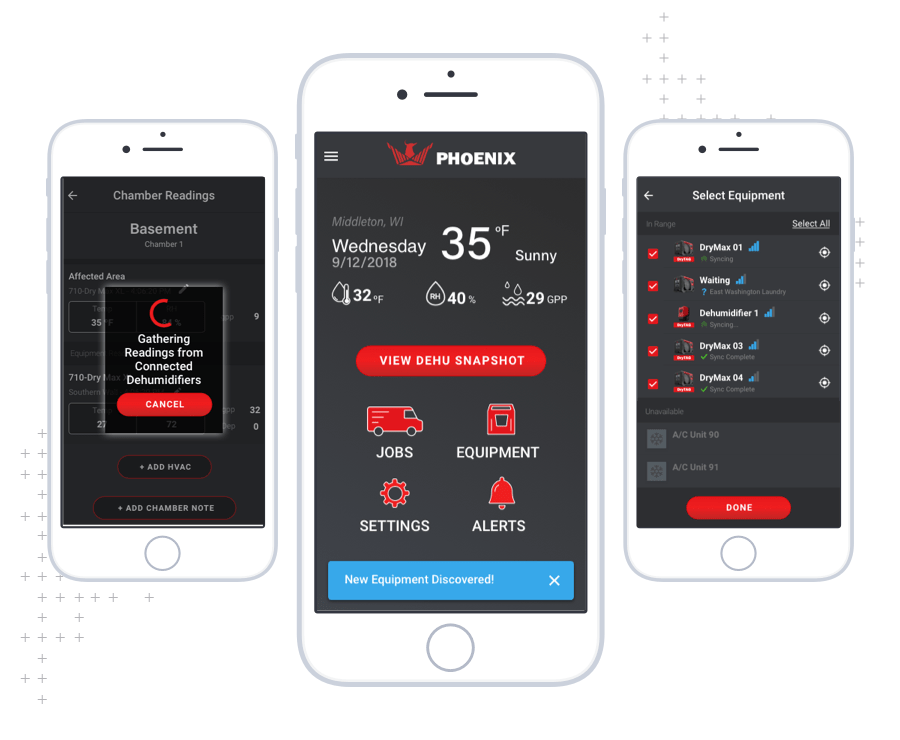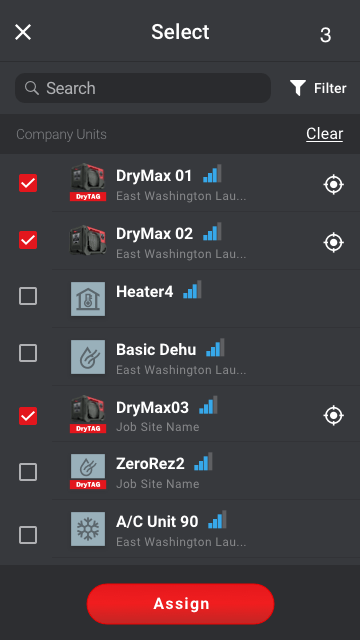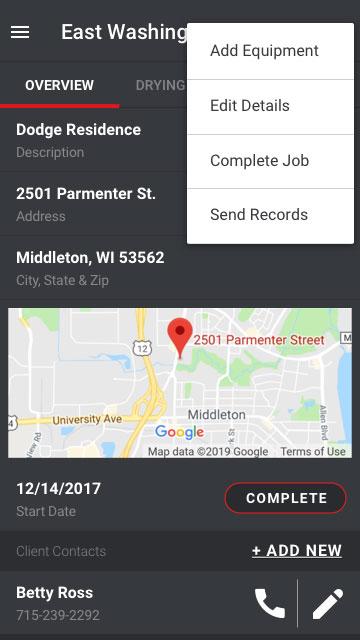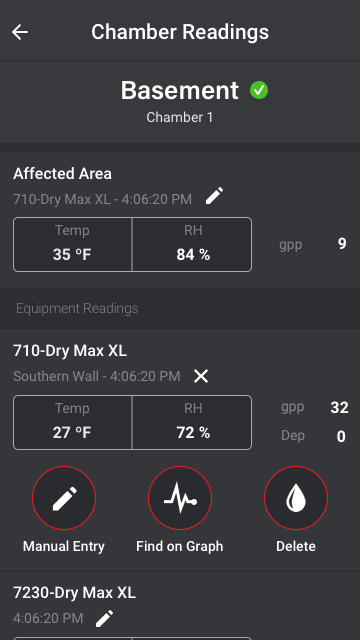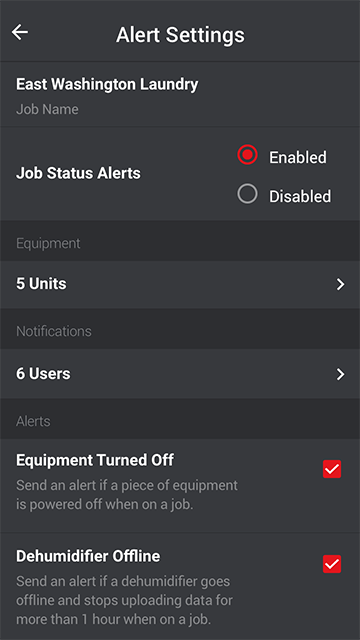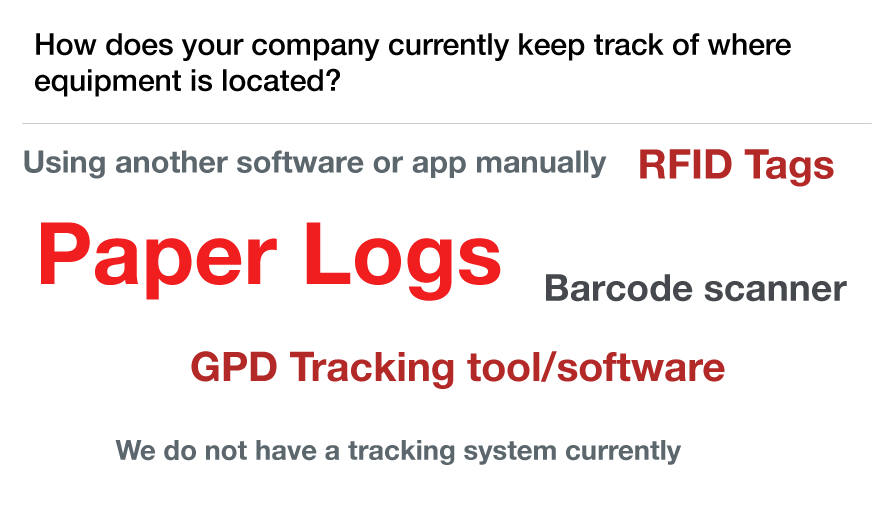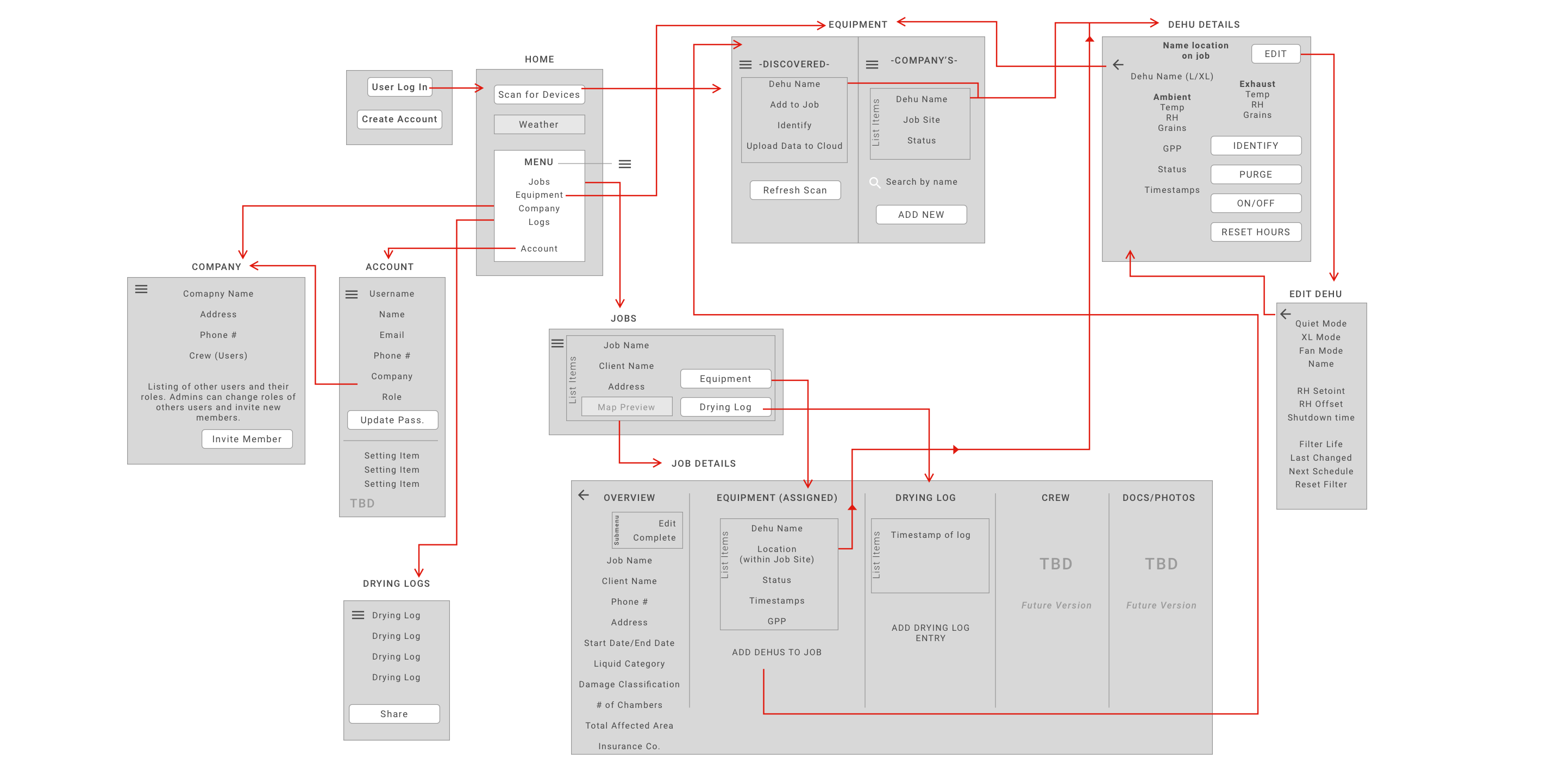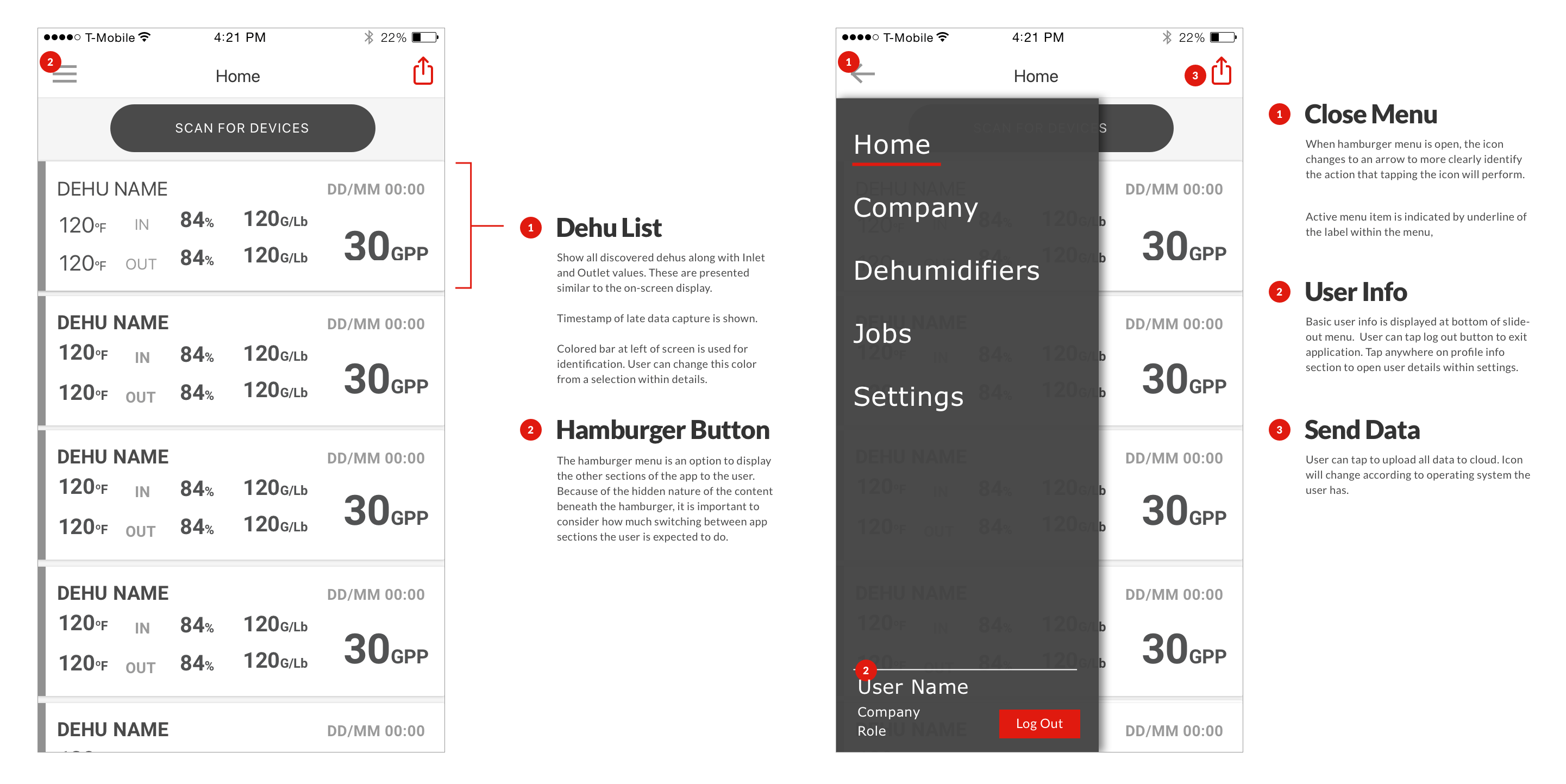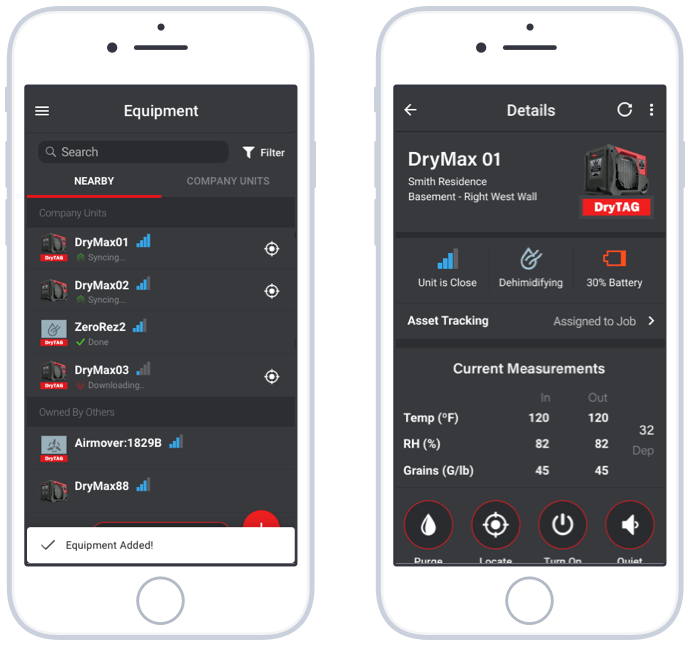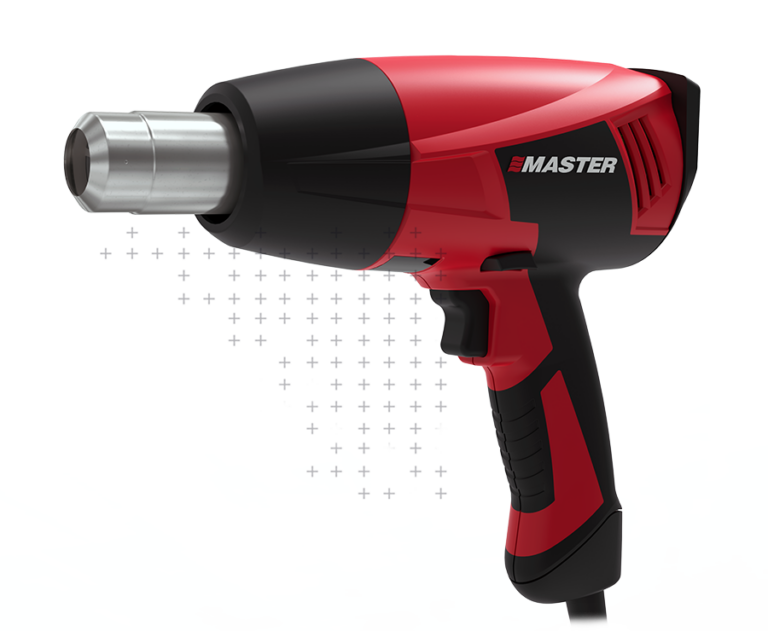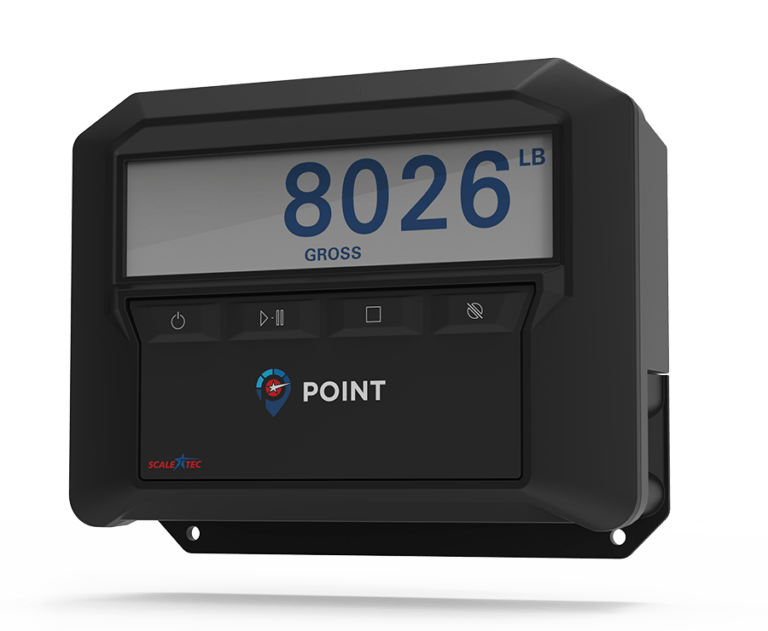Solution
A Unified Design Solution within a Growing Ecosystem of Products
The final design of the DryLINK app included many of the initial ideas from the Therma-Stor project team. But, the value of real user feedback surfaced some features that now are cornerstones of the app’s success. The i3 UX design team designed the UI for the app, which was then developed internally by Therma-Stor using the hybrid Ionic framework. The dark theme aligned with a larger redesign of Phoenix Restoration Equipment brand and marketing collateral.
Since the launch of DryLINK in 2018, The platform has gained over 6,000 app users and has driven sales of 7,500 Bluetooth enabled devices for Therm-Stor.

